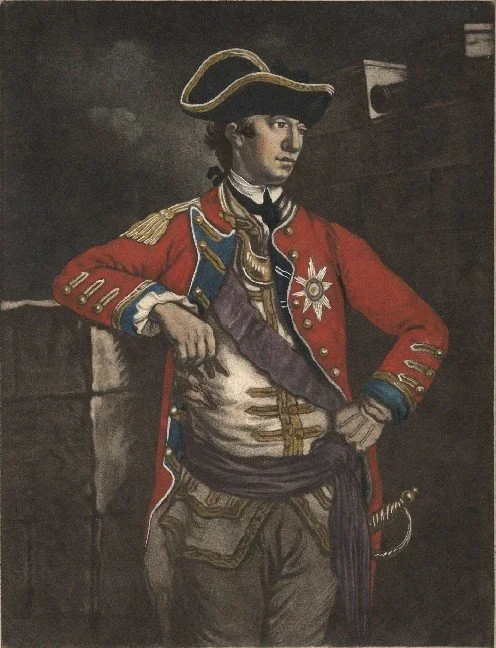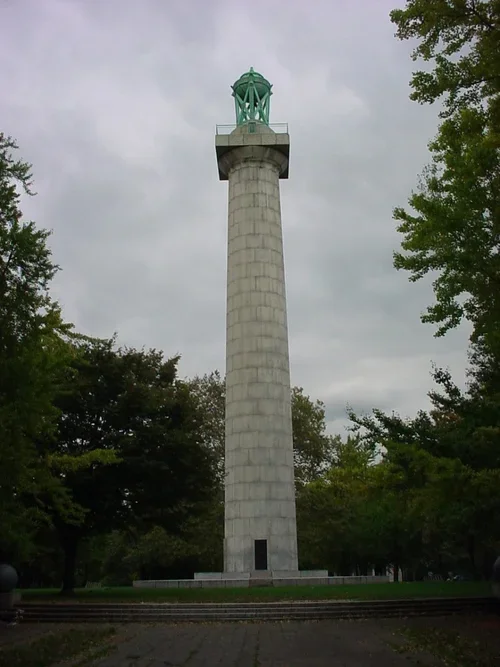Prisoners of the Deep: The Terror of HMS Jersey
By Armonee Wilkins
Programs & Events Coordinator Armonee Wilkins investigates the history, conditions, and lasting legacy of the HMS Jersey, one of the most feared British prison ships of the Revolutionary War.
A Floating Prison in New York Harbor
The practice of using prison ships, often referred to as ‘hell ships' [1] by those prisoners that survived captivity, was popularized between the 17th and 18th century by British forces [2] and was used to great extent in New York City during the Revolutionary War. Prison ships solved the problem of an influx of prisoners into already crowded British jails and allowed the British Army to capture and detain prisoners without using additional resources to send them to Great Britain. Their use led to Patriot casualties aboard ships that, by the end of the war, were many times those that died in battle.
One particularly infamous prison ship was the HMS Jersey, a decommissioned 60-gun fourth rate ship (a ship with two-gun decks, that mounted between 46 and 60 guns) of the Royal Navy. These ships were often redesigned to fit the changing needs of the British army. In 1771, the HMS Jersey served as a hospital ship [3] before being repurposed as a prison ship in 1780 solely for the American Revolution [4]. It was docked in Wallabout Bay, the small body of water located between the modern-day Manhattan and Williamsburg Bridge closest to the Brooklyn Navy Yard [5].
Daily Misery Below Deck
The HMS Jersey Courtesy of HathiTrust Digital Library.
The living conditions on the ship were horrendous. The original capacity of ship was 400 men, yet British forces stored 1,100-2,000 prisoners there at a time [6],[7]. Prisoners consisted of soldiers, sailors, and rebel citizens, and were often packed on top of each other. They were given little to no food and forced to endure the heat and other elements with little relief. As many as 8-12 people died a day on the Jersey [8] from disease, malnutrition, and the overcrowding [19]. Each battle the British lost, officers would return to these ships and unleash their rage [10],[11]. One prisoner stated in a letter, “At such times, when the enemy suffered a defeat, the prisoners were made to pay the price of their resentment. Our treatment grew harsher, our food diminished, and insults multiplied.”[12]
When people died on board the Jersey, their bodies were often left untouched for days [13]. Once the British were ready to move the dead prisoners, they were taken to the edge of the bank, lowered from the ships, tied up with rope and buried only 1 or 2 feet deep [14]. To avoid this fate, some American captives joined the British forces to gain immediate immunity, while others who were wealthy paid to be released [15]. The rest remained and hoped they would escape. In another prisoner letter, a prisoner wrote, "There is nothing but death or entering the British service before me. Our ship's company is reduced by death and entering the British service to the small number of 19. I am not able to give you even the outlines of my exile; but this much I will inform you that we bury 6, 7, 8, 9, 10, and 11 in a day. We have 200 more sick and falling sick every day; the sickness is yellow fever, smallpox, and in short everything else that can be mentioned." [16]
Sir William howe, by c. corbett. courtesy of brown university library.
Debating Duty and Compassion
The conditions of patriotic prisoners didn’t go unnoticed. In January 1777, General Washington heard of the inhumane conditions [17] and immediately wrote a letter to General Lord William Howe on January 13, 1777. In this letter, Washington warned, “remember, my Lord, that supposing us rebels, we still have feelings as keen and sensible as loyalists, and will, if forced to it, most assuredly retaliate upon those upon whom we look as the unjust invaders of our rights, liberties and properties.”[18] This statement indicates that the cruel punishments of the British forces had been a problem for an extended period of time.
General Howe responded on January 27, 1777, “The Means of preventing a Repetition of the improper Terms in which your Letter of the 13th Instant is expressed & founded upon the grossest Misrepresentations: I shall not make any further Comment upon it than to assure you, that your Threats of retaliating upon the innocent such Punishment... will not divert me from my Duty in any Respect.”[19] Howe’s response seemed to indicate his duties were more important than the threat General Washington had made, and both generals were offended by their captured soldiers potentially or actually suffering mistreatment at enemy hands.
Honoring the Prison Ship Martyrs
FOrt greene prison ship martyrs monument. courtesy of NYC Parks.
Prison ships were in use in New York harbor and other sites of British control until the British surrendered at Yorktown in 1781. The HMS Jersey was abandoned and burned down shortly after by the British forces evacuating. The U.S Department of Defense records today that 4,435 died in battle (this data was created on incomplete records) [20]. While approximately 20,000 Americans died aboard prison ships. Historians estimated that roughly 11,000 prisoners were registered to the HMS Jersey [21] during the Revolutionary War.
archictectual model of the Prison Ship martyrs Monument in fort greene park, brooklyn, ny; Jose Balboza, plaster, about 2005, brooklyn, ny; model Courtesy of janet T. skinner; photo courtesy of Fraunces Tavern Museum where it is currently on loan.
In 1873, the remains of those who perished aboard the HMS Jersey were transported to a more suitable burial ground in Fort Greene Park. By 1905, a group consisting of government officials, donors and the Fort Greene Chapter of the National Society Daughters of the American Revolution, decided to enlist the help of architect Stanford White and sculptor Adolph Alexander Weinman to design a new crypt. After undergoing many changes throughout the 20th century, the Prison Ship Martyrs Monument was fully restored in 2008. Commemorations are held at the Monument by patriotic societies to honor those who lost their lives aboard these ships. Visitors to Fraunces Tavern Museum today can also see a model of the monument on display in our McEntee Gallery, on loan from a current member of the Fort Greene Chapter of the National Society Daughters of the American Revolution.
Footnotes
Taylor, George. Martyrs to the revolution in the British prison-ships in the Wallabout Bay. P12
Dandridge, Danske. American Prisoners of the Revolution.
Taylor, George. Martyrs to the revolution in the British prison-ships in the Wallabout Bay. P12
Dandridge, Danske. American Prisoners of the Revolution. p242
Dandridge, Danske. American Prisoners of the Revolution.
Dandridge, Danske. American Prisoners of the Revolution. p 128
Stiles, Letters from the Prisons and Prison-Ships, p. 27
Taylor, George. Martyrs to the revolution in the British prison-ships in the Wallabout Bay.
Taylor, George. Martyrs to the revolution in the British prison-ships in the Wallabout Bay. p15, p20
Danske Dandridge, American Prisoners of the Revolution.
Stiles, Henry, Letters from the Prisons and Prison-Ships of the Revolution, p. 32.
Stiles, Henry, Letters from the Prisons and Prison-Ships of the Revolution, p. 32.
Dandridge, Danske. American Prisoners of the Revolution.
Taylor, George. Martyrs to the revolution in the British prison-ships in the Wallabout Bay. P19
Dandridge, Danske. American Prisoners of the Revolution.
Dandridge, Danske. American Prisoners of the Revolution.
Dandridge, Danske. American Prisoners of the Revolution.
“From George Washington to General William Howe, 13 January 1777”
“To George Washington from General William Howe, 23 January 1777,”
American War and Military Operations Casualties: Lists and Statistics
Dandridge, Danske. American Prisoners of the Revolution. P 246.
Bibliography
Dandridge, Danske. American Prisoners of the Revolution. (Kessinger Publishing, LLC, Whitefish, MO, 2004.)
Fort Greene Park Monuments - Prison Ship Martyrs Monument: NYC Parks. https://www.nycgovparks.org/parks/fort-greene-park/monuments/1222.
Taylor, George. Martyrs to the revolution in the British prison-ships in the Wallabout Bay. (New York: W.H Arthur & Co.,1855)
#10 - Recollections of the Jersey prison-ship; taken, ... 1829. - Full View | HathiTrust Digital Library (Photo of HMS Jersey)
Stiles, Henry Reed. “Letters from the Prisons and Prison-Ships of the Revolution.: Stiles, Henry Reed, 1832-1909, Ed: Free Download, Borrow, and Streaming.” Internet Archive, New York: Priv. Print., 1 Jan. 1865, https://archive.org/details/lettersfrompriso00stil/page/1/mode/1up?ref=ol&view=theater.
“From George Washington to General William Howe, 13 January 1777,” Founders Online, National Archives, https://founders.archives.gov/documents/Washington/03-08-02-0063. [Original source: The Papers of George Washington, Revolutionary War Series, vol. 8, 6 January 1777 – 27 March 1777, ed. Frank E. Grizzard, Jr. Charlottesville: University Press of Virginia, 1998, pp. 59–61.]
“To George Washington from General William Howe, 23 January 1777,” Founders Online, National Archives, https://founders.archives.gov/documents/Washington/03-08-02-0143. [Original source: The Papers of George Washington, Revolutionary War Series, vol. 8, 6 January 1777 – 27 March 1777, ed. Frank E. Grizzard, Jr. Charlottesville: University Press of Virginia, 1998, pp. 137–138.]
U.S Congress, Congressional Research Service. American War and Military Operations Casualties: Lists and Statistics. CRS Report RL32492, updated January 26, 2022 American War and Military Operations Casualties: Lists and Statistics | Congress.gov | Library of Congress







